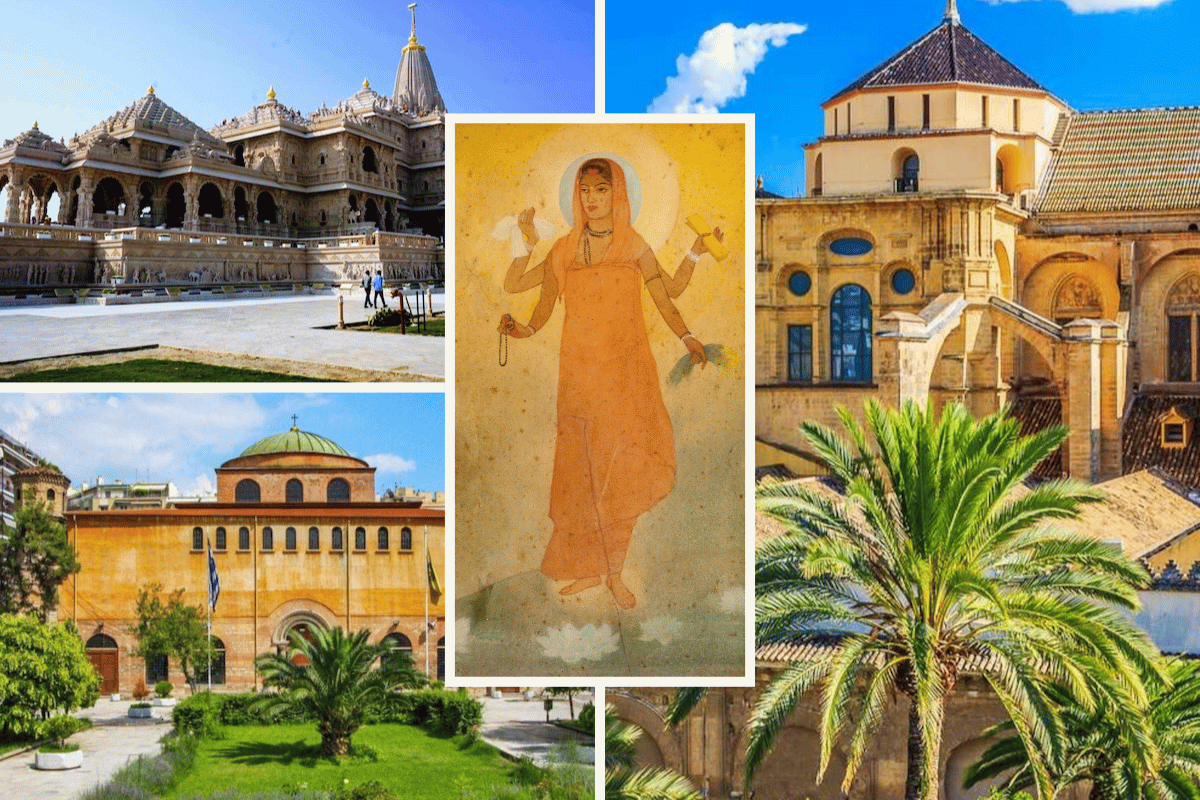
The Kumbh Mela is not just a Hindu festival or event, it’s a magnificent convergence of faith, tradition and humanity. Held once every twelve years in India, this awe-inspiring festival draws millions of pilgrims, making it the largest human gathering on the planet.

The Kumbh Mela is a testament to India’s rich cultural heritage and showcases the country’s exceptional organisational prowess, standing as a beacon of effective crowd management and community cooperation. The next Kumbh Mela is set to run between 13th January 2025 and 26th February 2025.
What is the Kumbh Mela?
The Kumbh Mela is a mass Hindu pilgrimage where devotees gather to bathe in sacred rivers, to purify their souls and wash away sins. The festival’s timing is determined by the alignment of the planets and stars, adding a cosmic significance to the spiritual experience.
The largest human gathering on the planet
Unprecedented Scale: The Kumbh Mela is renowned for its staggering scale. In 2013, over 120 million people attended the Kumbh Mela in Prayagraj, marking it as the largest gathering of humanity ever recorded.
Immaculate Management: Managing such an enormous crowd requires meticulous planning and flawless execution. The event sees the collaboration of various government agencies, security forces, healthcare providers, and volunteers. Their efforts ensure safety, hygiene, and efficient crowd control, often cited as exemplary in comparison to other large global events.
Why it runs
The Kumbh Mela has deep religious and cultural roots, drawing from ancient Hindu scriptures. According to the scriptures, the demi-gods and demons once fought over a pot (kumbh) of nectar that granted immortality. During the struggle, drops of nectar fell at the four sacred sites, imbuing them with spiritual significance. The festival runs to commemorate this religious event and provides devotees an opportunity to reconnect with their faith, seek spiritual rejuvenation, and participate in rituals.
Why every twelve years?
In Hindu astrology, the planet Jupiter completes its orbit around the sun approximately every twelve years. When Jupiter is in specific zodiac signs, it is believed to create an auspicious time for spiritual activities and bathing in sacred rivers. This alignment is thought to magnify the spiritual benefits and blessings for the devotees who participate in the Kumbh Mela.
The event is held in Prayagraj (formerly Allahabad), with smaller Kumbh Melas in between the twelve years at Haridwar, Nashik, and Ujjain.
Economic boost
The Kumbh Mela significantly boosts the local economy. From tourism to small vendors, the influx of pilgrims brings substantial economic benefits to the host city.
Cultural exchange
The festival is a melting pot of cultures, attracting not only Hindus but also people from various faiths and backgrounds. It fosters cultural exchange and promotes understanding and harmony. However it has not always been that way, British rulers once tried to tax Hindu pilgrims which reduced attendance numbers and Islamic ruler Timur’s armies plundered Haridwar and massacred gathered Hindu pilgrims.
Environmental initiatives
Kumbh Melas have always focused on sustainable practices, including waste management and river clean-up drives, highlighting a commitment to environmental preservation.
The Kumbh Mela is more than a religious event. It is a testament to human spirit, organisational excellence, and cultural unity. It stands as a shining example of how large-scale events have been managed in India with precision and care for thousands of years, celebrating the essence of humanity and tradition.
World Records
The 2025 Kumbh Mela is aiming to set 4 world records;
- The first record will focus on the largest synchronised sweeping drive, with 15,000 participants coming together to carry out a coordinated cleaning effort.
- The second record will aim at the largest e-vehicle parade, featuring 1,000 e-rickshaws and e-vehicles for eco-friendly pilgrimage.
- The third record will be a re-attempt to create the most handprint paintings within 8 hours, involving 10,000 participants.
- The fourth record will be the largest river-cleaning drive, involving 300 volunteers across multiple locations in Prayagraj.









